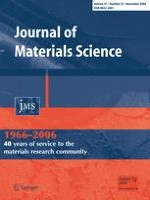01-11-2006 | Letter
Young’s modulus of zirconia at high temperature
Published in: Journal of Materials Science | Issue 22/2006
Log inActivate our intelligent search to find suitable subject content or patents.
Select sections of text to find matching patents with Artificial Intelligence. powered by
Select sections of text to find additional relevant content using AI-assisted search. powered by
